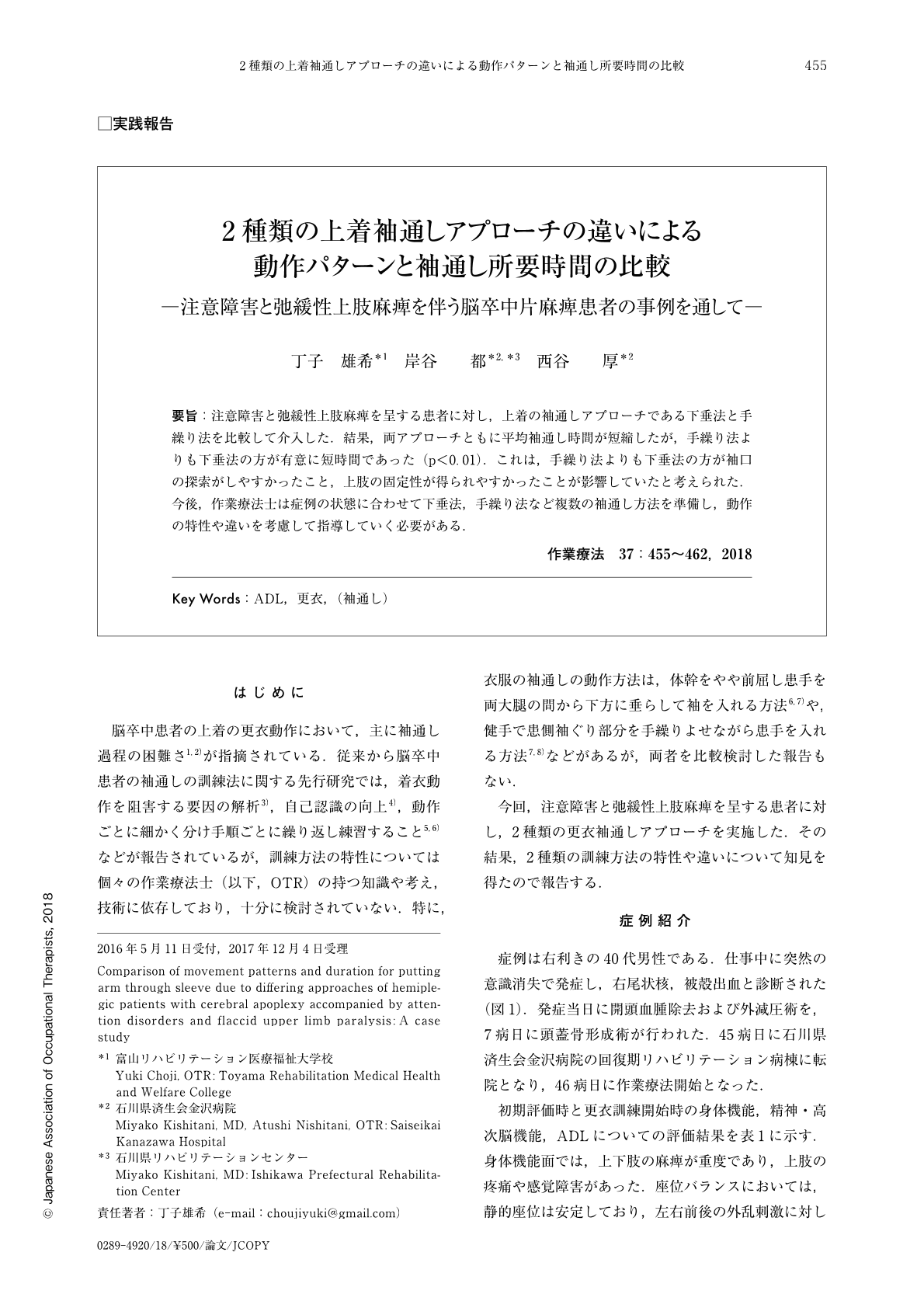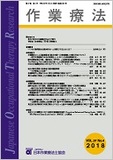Japanese
English
- 販売していません
- Abstract 文献概要
- 1ページ目 Look Inside
- 参考文献 Reference
要旨:注意障害と弛緩性上肢麻痺を呈する患者に対し,上着の袖通しアプローチである下垂法と手繰り法を比較して介入した.結果,両アプローチともに平均袖通し時間が短縮したが,手繰り法よりも下垂法の方が有意に短時間であった(p<0.01).これは,手繰り法よりも下垂法の方が袖口の探索がしやすかったこと,上肢の固定性が得られやすかったことが影響していたと考えられた.今後,作業療法士は症例の状態に合わせて下垂法,手繰り法など複数の袖通し方法を準備し,動作の特性や違いを考慮して指導していく必要がある.
We evaluated the combined effects of both drop and hauling methods for putting arms through sleeves in patients with attention disorders and flaccid upper limb paralysis. We measured the maximum time to put an arm through a sleeve, and we evaluated the subjects' behaviors using an iPad. As a result, both training methods showed short sleeve times, and the drop method showed an especially shorter average time than the hauling method. This may be due to a difference in cuff search methods. Furthermore, the drop method may be easier to obtain the fixation of the upper limbs when passing through the sleeves of clothes than the hauling method. Occupational therapists need to consider the characteristics and differences of training methods and differences according to the symptoms of the case.

Copyright © 2018, Japanese Association of Occupational Therapists. All rights reserved.


